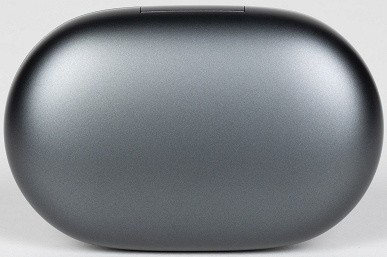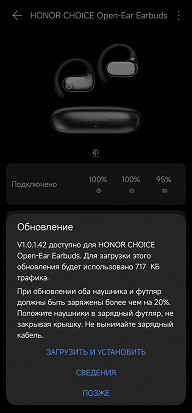When it seemed that the issue with the form of completely wireless headphones had been finally settled, manufacturers suddenly began experimenting in an interesting direction. They aim to create TWS headphones with an open design that have a number of important advantages. This allows the listener to control their surroundings, which can be useful during walks and outdoor sports. This format may also be of interest to users who prefer to avoid using in-ear headphones due to discomfort.
Recently, Huawei brought back from oblivion the so-called ear cuffs (or earrings), the idea of which appeared a long time ago, but was not properly implemented. Similar headphones were also announced by Bose. It seems that this format is becoming increasingly popular, and we'll likely see similar products from other manufacturers.
If Huawei, in search of a form for open headphones, paid attention to the original idea, then Honor decided to return to the classic design: large headsets with plastic earhooks, which we saw many years ago. However, now these are stereo headphones that can be used not only for calls, but also for listening to music while jogging. We will find out in the near future how well Honor Choice Open-Ear will cope with this task.
It should be noted that the headphones tested are not a product directly from Honor, but part of the Honor Choice ecosystem, which includes devices from affiliated brands or third-party manufacturers. This allowed the brand to assess the relevance and viability of the original format. This initiative brings diversity to the world of headphones, where there has not been anything new and interesting for a long time.
Specifications
| Speakers | ∅13.4 mm |
|---|---|
| Connection | Bluetooth 5.3 |
| Codec support | SBC, AAC |
| Multipoint | No |
| Control | sensory |
| Active Noise Cancellation | No |
| Headphone battery capacity | 60 mAh |
| Case battery capacity | 600 mAh |
| Battery life | until 10 o'clock |
| Autonomy including charging from the case | up to 40 hours |
| Charging connector | USB Type-C |
| Fast charging | not declared |
| Water protection | IP54 |
| Case dimensions | 85×60×26.5 mm |
| Earphone dimensions | 33×27×6 mm |
| Weight of one earphone | 7 g |
| Case weight | 49 g |
Packaging and equipment
Honor Choice Open-Ear comes in a white cardboard box with a removable lid, on which an image of the device and its main characteristics are located. Inside the box, the headphones are placed in a case, which is securely fixed using a cardboard holder.

The package includes the headphones themselves, a charging and carrying case, documentation, and a USB-A to USB-C charging cable 35 cm long.
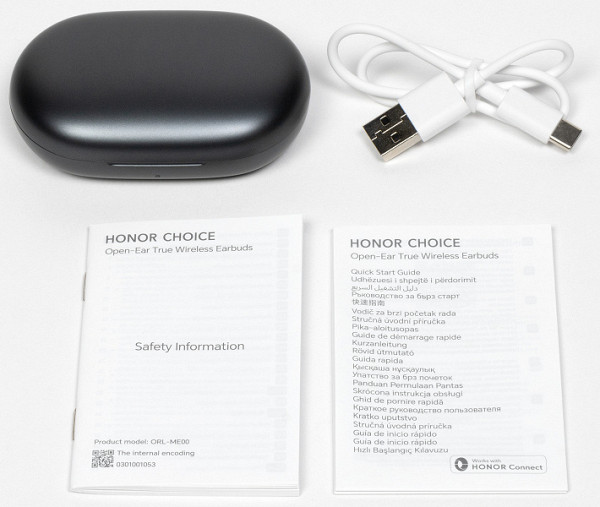
Design and construction
The headset comes in two colors — black and light gold. During our testing, the first one was more strict and concise.
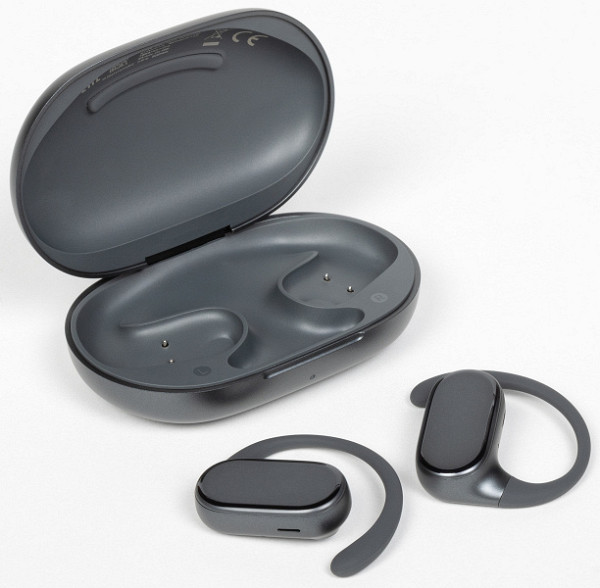
The case is relatively large, but at the same time flat and without sharp corners. Therefore, it fits well in your hands and does not cause any inconvenience when carried in a trouser pocket.
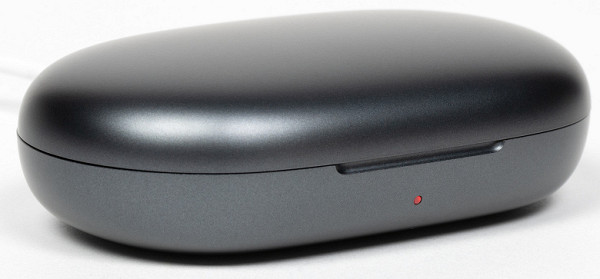
On the front there is an LED indicator for charging and the current operating mode, as well as a small recess that makes opening the lid easier.
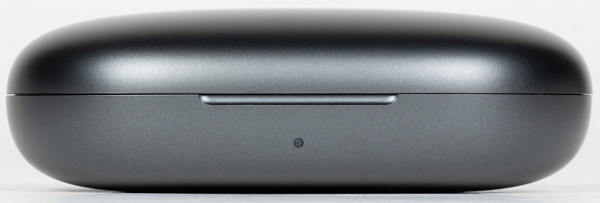
The cover of the case is matte and resistant to fingerprints. There are no decorative elements on the external surfaces, including the manufacturer's logo. This is an ideal option for fans of minimalist design.
On the back there is a USB Type-C connector for charging, pairing via Bluetooth and resetting the headphones to factory settings, as well as a small button.
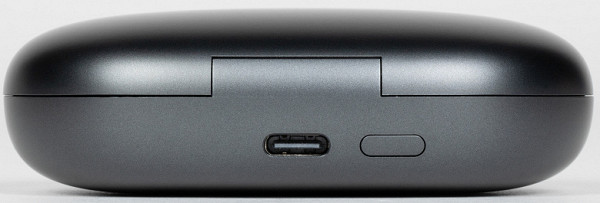
Opening the lid requires some effort, a little above average, and the case is quite large, which makes interacting with it with one hand inconvenient. Brief technical information and certification system logos are located on the inside of the cover. Below there is a small silicone element that provides additional fixation of the headphones inside the case.
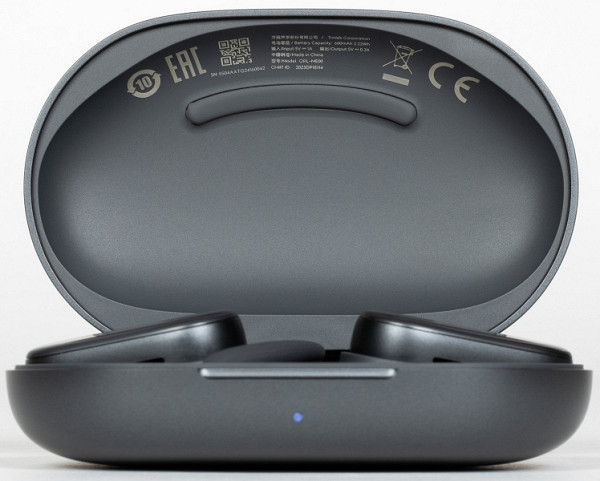
There is a closer, it operates approximately halfway through and very securely fixes the lid in both positions.
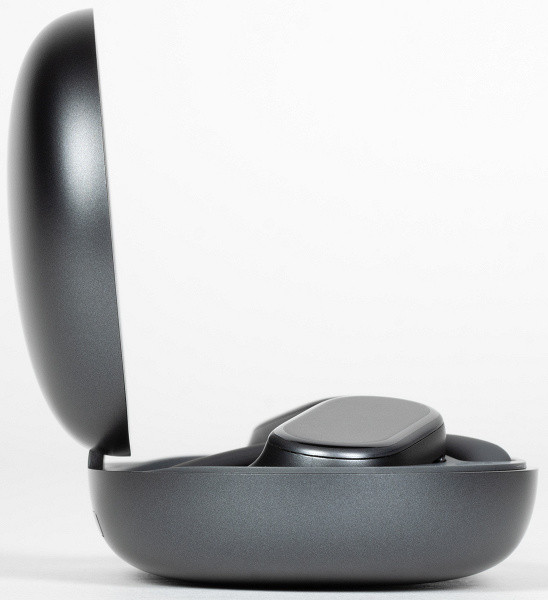
The headphones are held in place using magnets, which do an excellent job — they definitely won’t fall out accidentally.
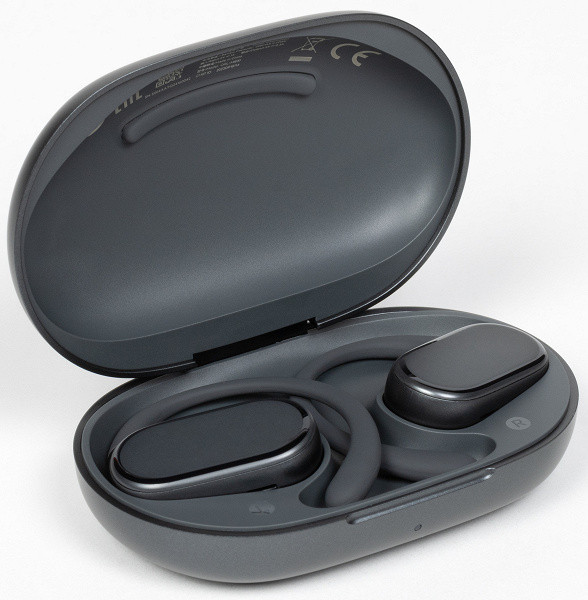
Inside the headphone case there are spring contacts for charging. Thanks to the shallow depth of the slots, cleaning the contacts if necessary will be an easy task.
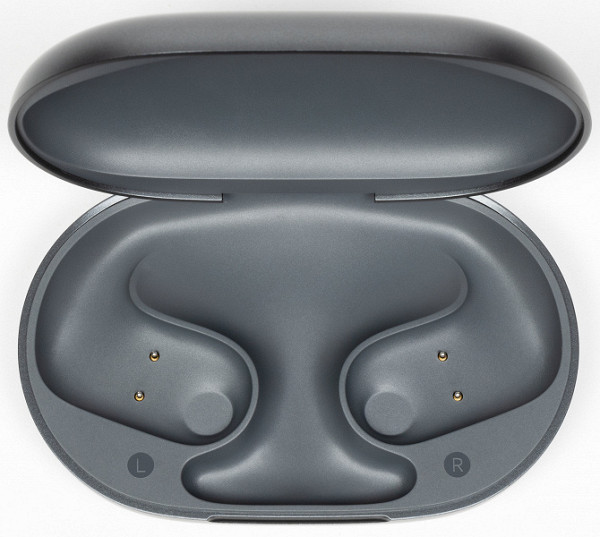
The headphone body has an oval shape, similar to popular fitness bracelets. The front side is decorated with a narrow glossy stripe, although the inside is matte. However, the latter is prone to visible fingerprints, which is inconvenient given that this surface is touch-sensitive and is used to control the headphones.
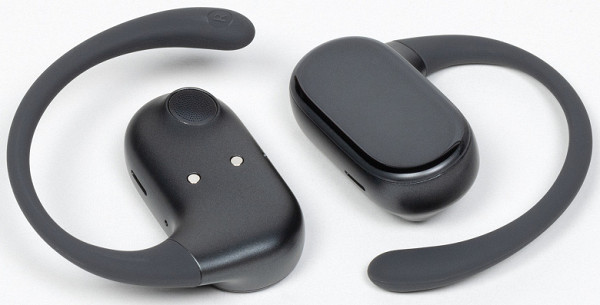
The earhooks are covered with silicone with a soft-touch effect and are very pleasant to the touch. The ends on the inside have small markings for the right and left headphones.

When viewed from the side, it is noticeable that the shape of the behind-the-ear arch is far from unusual and well thought out. This shows that the developers paid attention to this. Their efforts have brought results: the fit of the Honor Choice Open-Ear headphones is comfortable and of high quality.
At the ends of the earhooks there are drop-shaped thickenings that provide support on the back surface of the auricle.
It should also be noted that this part has well-chosen elasticity. The manufacturer does not disclose what it is made of, but it turned out just right.
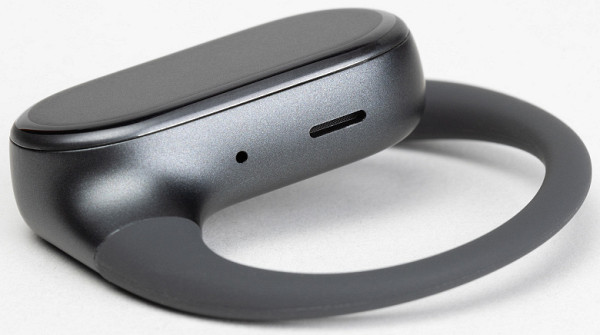
The shape of the inner part is made as smooth as possible — no sharp corners that could put unpleasant pressure on the auricle.

At the bottom of the case you can see two holes. One of them is small and round, probably a compensation one, designed to relieve pressure when the dynamic driver is operating. But behind the second, slit-like hole, microphones for voice communication are probably hidden.

The sound guide is slightly inclined for more precise positioning relative to the ear canal. It's unclear how effectively this functions, but the attention to detail from the developers is commendable.
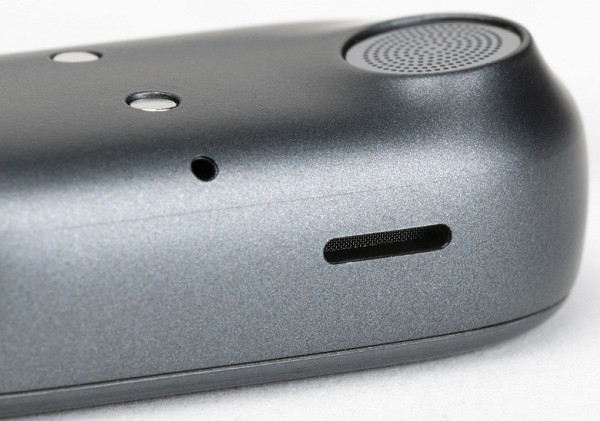
The sound guide hole is covered with a metal mesh, which is placed almost flush with its edge — there should be no problems with cleaning if necessary.
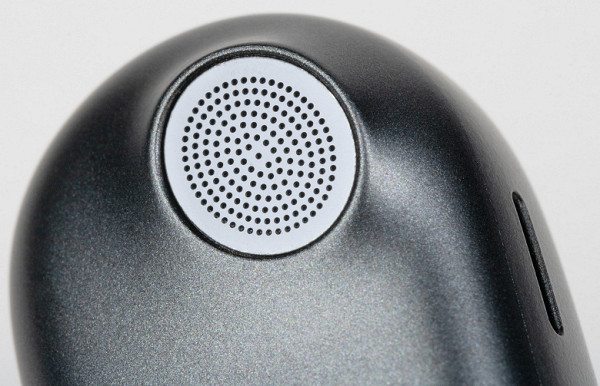
Connection
After opening the case cover for the first time, the headset automatically enters pairing mode. It can subsequently be activated by pressing the button next to the USB Type C port mentioned earlier. Then in the Bluetooth menu on the smartphone we find Honor Choice Open-Ear and connect — all actions are standard. The device does not support connecting to two or more sources simultaneously (multipoint). A complete list of supported codecs and their modes can be found using the Bluetooth Tweaker utility.

The headphones have two codecs — SBC and AAC. The capabilities of both are sufficient for a budget model. However, SBC's maximum Bitpool is limited to 39, while the recommended High Quality profile is 51. AAC's bitrate is also limited to 131 Kbps. We can assume that the developers made this decision in order to ensure a more stable connection between the headphones and the sound source. In addition, the design of the Honor Choice Open-Ear is unique, and it is likely that codec settings do not have a key impact on sound quality.
The last step in preparing the headphones for use is to install the AI Space application, which is widely used with Honor devices. Once installed and connected, the application automatically checks for firmware updates and, if available, prompts you to install them.
Management and software
The main screen of the application displays the current charge level of each earphone and case. Below are three preset sound modes available. Although there are only three modes, it would be great to have a full six-band equalizer. Given the headphone's large driver, they could probably make good use of equalization. However, even three modes allow you to some extent compensate for the sound characteristics of the headphones, due to their design and placement on the auricle.
Control is carried out using touch zones on the outside of the headphones. To prevent accidental clicks, single touches are blocked; only double and long touches are supported. Although the panel is quite large, it would be logical to add swipes as well, but their absence limits the headphones to performing only basic actions. By default, the management profile looks like this:
- Double tap: control playback, answer and end calls.
- Long press: scroll through the track (left — back, right — forward), reject an incoming call.

The touch zones work well, all touches are registered correctly. From the application, you can configure actions for both types of clicks for each of the headphones separately.
In particular, you can add volume control. However, a dilemma arises here: what is more important — flipping through songs or adjusting the volume. You have to choose between playback and volume controls in order to assign long touches to scrolling, and double touches to control volume. But this is only one of the options. In general, the ability to swipe for more varied controls is sorely missed.
You can also find instructions in the application, in Russian, which is nice. Well, check again to see if there is a firmware update.
Exploitation
Let's turn to the manufacturer's marketing materials and look at how they recommend wearing the headset. Everything here is quite obvious; it’s unlikely that anyone will have any doubts about how to properly put on the Honor Choice Open-Ear. However, there are several nuances. For example, the base of the earphone housing may press on the front of the ear, and the protrusion of the earhooks may be unpleasant at the height of the earcup at the back. This may be a problem for some due to the shape of their ears. However, in many cases it is enough to simply make small adjustments to the fit and find a comfortable position for the earphones.
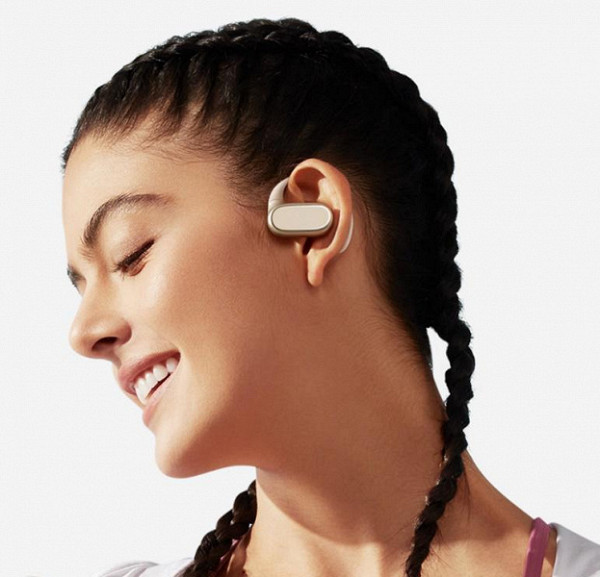
Let's turn to the manufacturer's marketing materials and look at how they recommend wearing the headset. Everything here is quite obvious; it’s unlikely that anyone will have any doubts about how to properly put on the Honor Choice Open-Ear. However, there are several nuances. For example, the base of the earphone housing may press on the front of the ear, and the protrusion of the earhooks may be unpleasant at the height of the earcup at the back. This may be a problem for some due to the shape of their ears. However, in many cases it is enough to simply make small adjustments to the fit and find a comfortable position for the earphones.
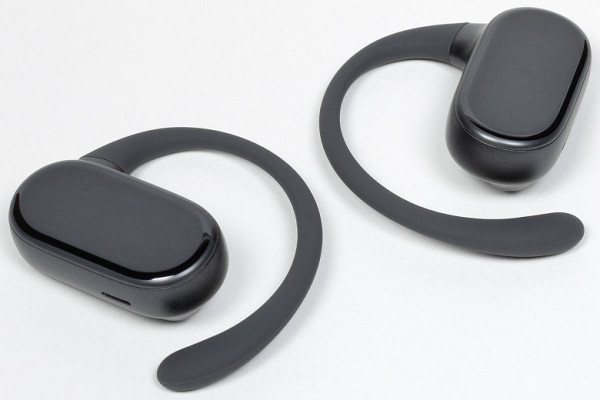
Of course, the headset is great for active outdoor activities — this is perhaps one of the main scenarios for its use, which the manufacturer places special emphasis on. The headphones are IP54 rated, which means they are resistant to dust, drops of sweat, and even light rain. At the same time, the level of passive sound insulation is minimal — this is precisely their feature. With moderate playback volume, you can easily monitor your surroundings, reducing the risk of an accident while running. However, using Honor Choice Open-Ear in the subway will not be very comfortable due to low insulation from external sounds. It should also be taken into account that the sound from the headphones can be heard by others, especially at medium playback volume, which is worth keeping in mind when in public places.
Microphones for voice communication
The manufacturer announced the availability of two microphones with a noise reduction function and a Deep Neural Network (DNN) noise protection algorithm, the operation of which we will now look at. It should be noted that only one microphone is always active, but the total number is two, so that the headphones can be used separately in mono mode.
To measure their amplitude-frequency response (AFC), we use a specially prepared room and a monitor acoustic system that reproduces a sweep tone. Previously, we obtain a graph of the frequency response of the speakers using a calibrated measuring microphone, taking into account that it is far from uniform. The data obtained is used to create a correction profile that helps compensate for acoustic features. The signal is then recorded using a microphone similar to the one used for measurements. The resulting graph is adjusted based on a previously created profile, and at the output we obtain the individual frequency response of the microphone under test.

The voice of an adult man has a fundamental frequency from 85 to 155 Hz, a woman — from 165 to 255 Hz. However, for voice transmission, frequencies from 300 to 3400 Hz are usually used, which are called “voice”, since it is in this range that the formants responsible for speech intelligibility are located. Frequencies below this range are often «clipped», not only due to transmission channel limitations, but also due to the presence of unwanted sounds such as the hum of engines and low-frequency crowd noise.
In general, the Honor Choice Open-Ear microphone is configured quite logically, although the presence of two noticeable “dips” in the frequency response may raise questions. Despite this, the voice sounds quite intelligible, which is a more important aspect. We made two audio recordings: the first was recorded using headset microphones, the second was recorded using a professional recorder so that comparison could be made.
Of course, a recording made with a recorder sounds more spacious and rich. However, recording using the Honor Choice Open-Ear microphone was almost as intelligible and pleasant to listen to, without causing irritation. Now, since it claims to have an “advanced” noise reduction system, you can check it out. To do this, we will record a couple of tracks again, adding background noise: we will turn on the sound of a busy street through acoustics located near the recording site, and see how this affects speech intelligibility.
In the recording from the headset microphones, there is practically no noise audible, and the voice, although it has lost a little in its naturalness, remains very intelligible. This is an excellent result, which confirms that Honor Choice Open-Ear can be used as a headset for voice calls, even in mono mode, during everyday activities.
Autonomy and charging
The body of the Honor Choice Open-Ear headphones is above average in size, which made it possible to place a 60 mAh battery in it. The manufacturer claims that this provides up to 10 hours of battery life. However, as always, these data are based on conditions that may be somewhat optimistic. We strive to test under more realistic conditions, which often results in slightly less battery life than advertised.
For our tests, we set the safe sound pressure level when listening to music at 75 dB, although in practice many people prefer levels in the region of 90-100 dB. We broadcast white noise at a level of about 95 dB into the headphones and record the operating time of each of the headphones immediately after playback starts.

The headphones are discharged almost simultaneously — the difference in operating time is no more than 5 minutes. They are rarely used in mono mode; most often, both headphones are placed in the charging case when one of them is discharged. Therefore, we only take into account the operating time of the earphone that worked less.
- Test 1: 9 hours 38 minutes
- Test 2: 9 hours 22 minutes
- Test 3: 9 hours 29 minutes
Average: 9 hours 30 minutes.
Autonomy is almost as advertised — an excellent result. With slightly quieter playback, you can achieve the claimed 10 hours of battery life. The case is capable of fully charging empty headphones up to 5 times, which means that the total operating time without recharging can exceed the stated 40 hours.
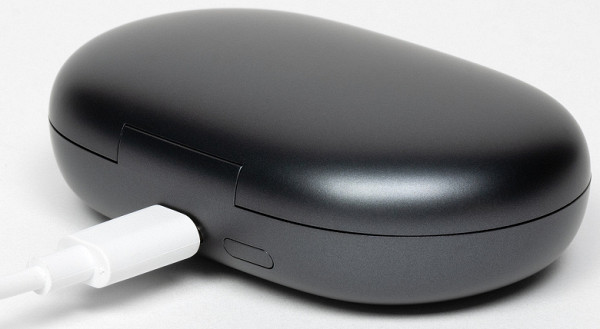
Sound and frequency response measurements
The speaker of the Honor Choice Open-Ear headphones is large, with a diameter of 13.4 mm, which is considered quite large for TWS headsets. It successfully reproduces the low-frequency range, which can be easily appreciated by pressing the headphones to your ears. However, due to the design, when the headphones are not pressed against the ears, the effect of low frequencies is not as pronounced. The sound guide protrudes slightly beyond the body and is tilted forward, but this only slightly compensates for the lack of direct contact with the ear canal.
As a result, low frequencies become less noticeable, and the mids sound clear and detailed. The manufacturer has placed emphasis on high frequencies so as not to lose them, but sometimes they can sound a little harsher than expected. It's a matter of taste.
To measure the amplitude-frequency response (AFC), we will use a stand with an imitation of the ear canal, which will allow us to correctly place the Honor Choice Open-Ear headphones.
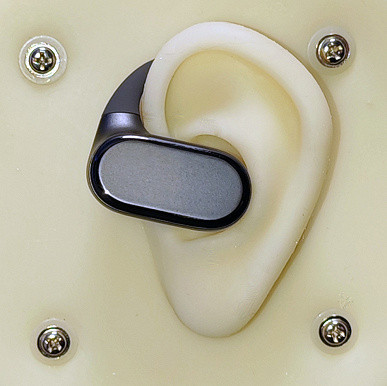
All the sound features of Honor Choice Open-Ear are clearly visible on the graph. There is predictably no “deep” bass, the mids are delivered more or less smoothly, and the high-frequency range is accentuated.

There are no correction curves for this type of headphones, so this time we will do without them. However, we will overlay the resulting graph with a target curve intended for over-ear headphones. This will allow us to show that the peak at high frequencies is located approximately in its place and is not perceived as sharply as the first glance at the graph might suggest.

The “bass boost” equalizer profile does make it possible to slightly emphasize the low-frequency range, but this happens not so much due to an increase in the level of low frequencies, but rather due to a “dip” in the mids. It sounds good enough in dance music genres to help accentuate the beat while you're running — generally acceptable.

When it comes to the vocal boost EQ profile, cut lows and boosted highs don't always fit perfectly into the musical sound. However, when listening to podcasts, this profile allows participants to better highlight their speech and improve its intelligibility, which is nice for those who prefer to listen to informative programs while walking or jogging.

Results
The Honor Choice Open-Ear caught our attention as an innovative take on the over-the-ear headset format. And this approach turned out to be successful: the device became niche, but quite viable. Headphones that allow you to hear surrounding sounds are not as common. There are over-the-ear headphones, but they usually cover the ears and isolate them from their surroundings, and are also quite large. There are bone conduction models, but they often sacrifice sound quality. “Earring headphones” have recently appeared, but they are not suitable for everyone due to the design and the way they are worn.
In this context, Honor Choice Open-Ear looks like a more universal solution, but also affordable — at the time of testing, their price was about 6 thousand rubles. Of course, there were some shortcomings: the controls could be more convenient, and the external surface could be less susceptible to fingerprints. However, their design is attractive, battery life is good, and the fit is comfortable and secure. The sound features in this case have become a characteristic rather than a disadvantage, and this is the price for an open design.


